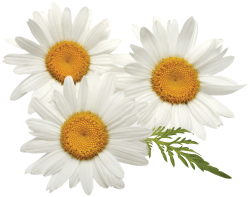Chamomile: The Plant Doctor
by Rhonda Allison
Chamomile, much like a melodic lullaby spoken to a restless child, is known for its calming and soothing abilities. It is of course widely popular in tea, aromatherapy, and has even replaced grass in many gardens, including the lawns of Buckingham Palace in London.
So what does this wonderfully fragrant perennial do for the skin? Well its aesthetic benefits closely mirror that of herbal teas or aromatherapy formulas – it delivers soothing, anti-inflammatory healing and antioxidant benefits to the skin.
The Plant Doctor
The word chamomile (earth apple) originates from the Greek words chamai (on the ground) and melon (apple). Its fragrance is sweet, crisp, fruity, and herbaceous – much like an apple – and it is part of the Asteraceae family of vascular plants, of which there are several different species. The two most commonly used are the Matricaria recutita (German chamomile) and Anthemis nobilis (Roman chamomile).
Chamomile, native to Europe, parts of Asia, and Africa is the national flower of Russia. It is also one of the most widely used botanicals. More specifically, it is the daisy-like, white flower portion of the herbaceous plant that is used medicinally and in herbal teas to relax, treat stomach problems, and improve sleep. Medicinal uses of chamomile are said to have originated with the ancient Egyptians, Romans, and Greeks.
Chamomile has also been referred to as "the plant doctor," because it is believed to help neighboring plants grow and maintain health, especially those that produce essential oils, as it increases the production of the oils.
 The Skin Whisperer
The Skin Whisperer
Chamomile offers one of the most versatile essential oils, which lends the ingredient to many cosmeceuticals uses. This powerful plant heals and soothes, and works as an antibacterial, anti-inflammatory, and antioxidant. It has also been noted for its age-reversal properties, and the treatment of various skin challenges.
The essential oil in chamomile contains flavonoids, lipophilic and phenolic compounds, and bisabolo, making it effective in treating a range of issues including rashes, acne, hypersensitivity, inflammation, allergic reactions, and eczema; among others. These properties also give chamomile its healing powers and the ability to enhance percutaneous absorption of other ingredients.
The phenolic compounds in chamomile have also been shown to reduce oxidative damage by acting as a free-radical scavenger. These derivatives also deliver antiseptic and emollient properties, which soften and assist in decongesting the skin.
Meanwhile, the flavonoids along with the lipophilic (ability to attach to lipids) compounds help enhance microcirculation and capillary function, which strengthens skin cells, and thus supports a youthful appearance.
Look for various ways to incorporate chamomile into your treatment room – perhaps with a therapeutic mist over fresh linens, in your skin care regimens and products you use, or with a cup of soothing tea following a treatment. Your clients are sure to leave relaxed and stress free.
Rhonda Allison, a pioneer in the skin care industry, is the Founder and CEO of Rhonda Allison Cosmeceuticals, as well as an author and internationally known speaker with more than 30 years of
aesthetic experience.